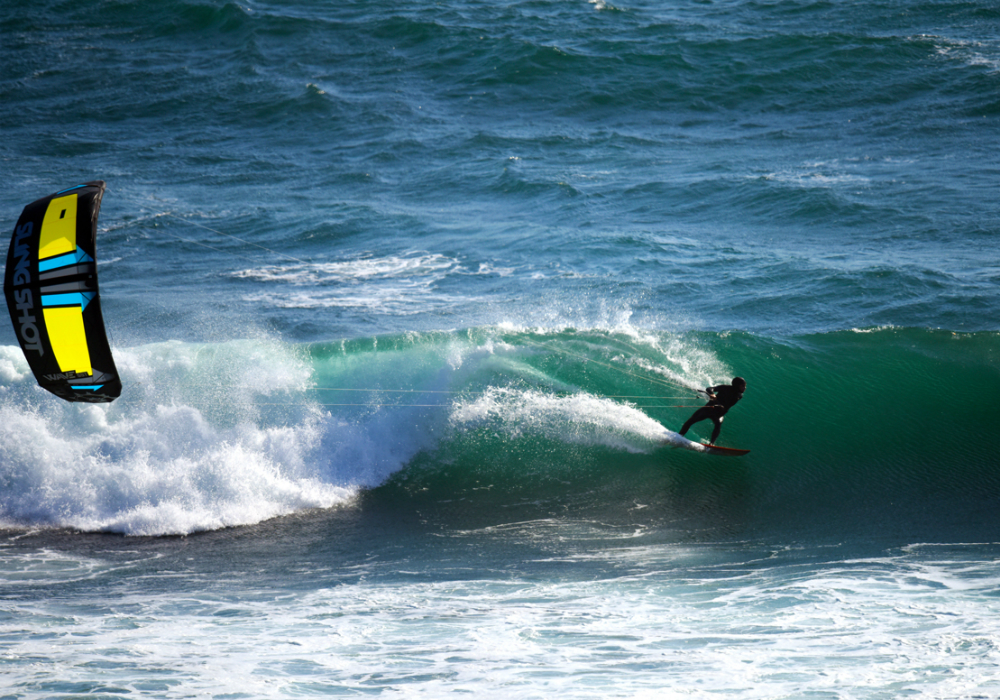is a raw and rugged slice of kiteboarding paradise. Stretching north of Cape Town, this region features dramatic landscapes — dry, green scrublands contrasted against white sand dunes and expansive, empty beaches. Alongside the region’s natural beauty, the consistent southeasterly winds make it a kitesurfing hotspot from October to March.
Among all the spots, Langebaan stands out as the region’s freestyle and beginner-friendly gem, thanks to its warm, shallow lagoon waters. But wave seekers and advanced riders will also find their fix at places like Yzerfontein and Paternoster.
South Africa’s West Coast — a quieter, wilder coastline north of Cape Town, featuring Langebaan Lagoon, Yzerfontein, and Paternoster.
High: October – March (20–40 knots) Low: April – September (10–20 knots) Wind Probability: 95% in peak season

Air Temperature: 22–38°C Water Temperature: 14–20°C (shorty or full wetsuit recommended) Wind Direction: Predominantly southeasterly, side-onshore

Great for all levels — Shark Bay and Main Beach for beginners, flatwater and downwinders for intermediates, and reefy wave spots for advanced riders.
Dune drives, seafood feasts in Paternoster, kayak safaris, birdwatching in Langebaan Lagoon, and local wine tasting along the way.







Langebaan and South Africa’s West Coast are unique because they truly offer something for everyone. The shallow turquoise waters of Shark Bay make it one of the safest and most beginner-friendly kite spots in the country, while Langebaan Main Beach is perfect for intermediates and freestylers looking to practice tricks or simply cruise with space to spare. Saldanha and Velddrif open up endless freeride and flatwater opportunities, while advanced riders can chase long, clean lines at Yzerfontein and Paternoster when the swell arrives. The region blends reliable wind with variety — flatwater progression, freestyle playgrounds, and heavy wave sessions — all set against raw, uncrowded beaches. Whether you’re learning, leveling up, or charging waves, the West Coast delivers.
The West Coast isn’t just about wind and water — it’s also a haven for nature, food, and slow-living escapes. Between kite sessions, you’ll find endless ways to explore, indulge, and recharge.
Wander hiking trails bursting with wildflowers, spot unique birdlife, and soak up sweeping lagoon views.
Paddle by kayak or SUP, or join a boat trip to see seals, dolphins, and seasonal whales up close.
Feast on crayfish and mussels fresh from the sea, paired with the village’s laid-back charm.
Stroll through whitewashed streets, browse art galleries, and discover the region’s Mediterranean vibe.
Venture further to Elands Bay or Lambert’s Bay for surf, sunset braais, and remote bird colonies.